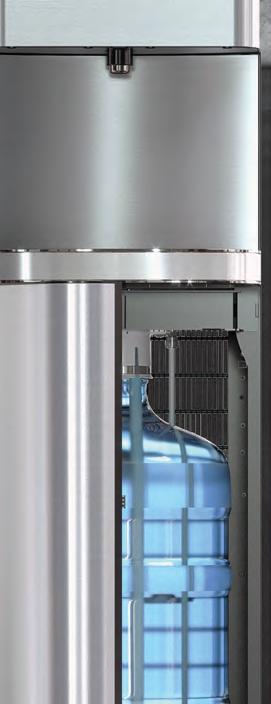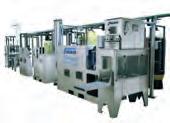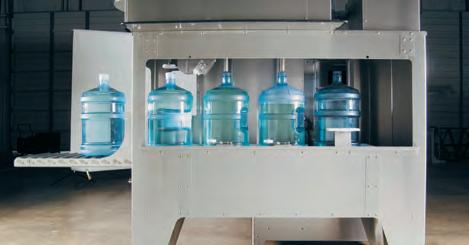








































20 | What We Did—and Didn't— Learn From the 2022 Midterm Elections Insights from the recent elections that will help IBWA advance its advocacy plans.
22 | Reelin' in the New Year
These #H2OFactCheck social media campaign reels dispel common myths about bottled water.



24 | Updated Plant Technical Reference Manual Covers FSMA and More


Do your CPOs have the revised edition of IBWA's PTRM? They need it to study for the 2023 CPO exam.
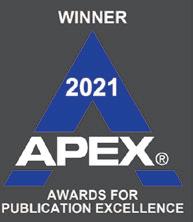

28 | Shifting Tastes
Review the latest statistics that show how consumers' tastes changed during the height of the pandemic—and how tastes have evolved during the last 40 years.
Several researchers studying the effect of proper hydration on cardiovascular health have identified numerous long-term benefits of proper water consumption, regardless of whether you are young or old. Those findings can help water bottlers understand why and how their products impact a consumers’ health in a positive way.
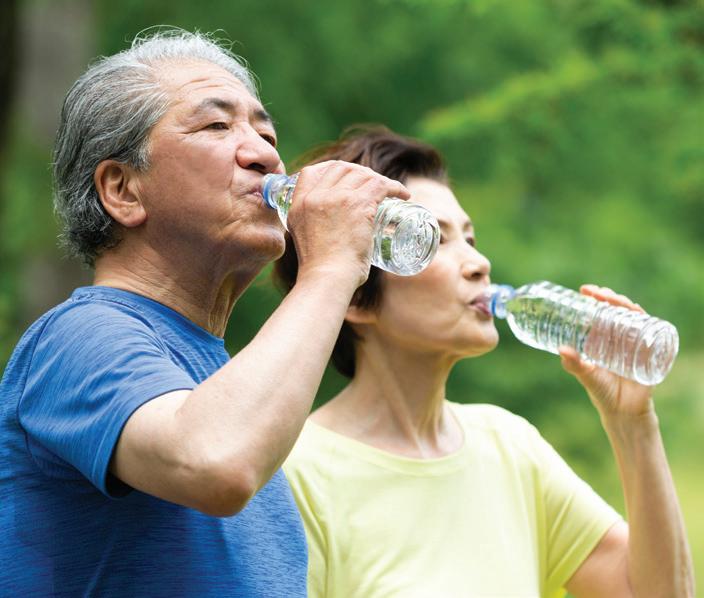 By Christine Umbrell
By Christine Umbrell
In his chair acceptance speech during the 2022 IBWA Annual Business Conference, Henry R. Hidell, III, discussed his love of education, passion for water, and plans for IBWA moving forward. Read this article to learn about the nine tenets Hidell developed to effectively address the challenges faced by the bottled water industry.
 By Henry R. Hidell, III
By Henry R. Hidell, III

Chair
This is my first editorial as your new Chair. I am honored to be the first Supplier Member to serve as Chair of IBWA.
I appreciate the trust placed in me by each of you to advance the important activities of IBWA that serve our members and your customers. These efforts include the extraordinary lobbying undertaken as more and more governmental regulations and legislation are introduced that negatively impact bottled water. This includes proposals on issues such as plastic recycling, plastic waste, water resource stewardship, tariffs on water coolers imported from China, and bottled water often accused as being an unnecessary “luxury.” IBWA responds to each charge.
We are challenged by many issues that are not a result of our activities, including microplastics and water loss during times of drought. IBWA has tried to respond to those issues at all levels on a limited budget of about $5 million. We have done a significant job with strong results over the past decades, defending our members and all bottlers, whether members of IBWA or not.
In the future, we will face the challenge of the Public Trust Doctrine. The overriding question is “Who owns the water?” We must defend our rights to water as a priority to help ensure the public wellbeing and safety. This is particularly important in the face of infrastructure failure, whether in Flint, Michigan; Jackson, Mississippi; or the loss of water wells servicing small agricultural communities in Southern California. The public can trust that the bottled water industry will deliver this most vital, lifesaving, healthy product to all in need. We stand in support of Americans right to have safe, healthy drinking water.
These issues will challenge us all in the foreseeable future. But, with that said, I will continuously focus on what this industry offers to the general consumer public. There is one theme: We are a great industry with great people that makes great products.
I ask that each of us, as members of IBWA, stand proudly in our communities—and before our local, state, and federal regulatory agencies and legislative bodies. We are the answer to the question of how to improve consumer health. We are the answer to the future as climate change takes hold and impacts our nation’s water infrastructure with increasing temperatures impacting the risk of disease, drought, and the deterioration of public water distribution systems through floods and storms. Bottled water companies will be there to support our communities through it all!
Henry R. Hidell, III IBWA Chair
Henry R. Hidell, III, Hidell International

Vice Chair
Hih Song Kim, BlueTriton Brands
Treasurer
Joe Bell, Aqua Filter Fresh, Inc.
Immediate Past Chair
CR Hall, Hall's Culligan
Shayron Barnes-Selby, Primo Water
Michael Efron, The Waterways Company
Brian Hess, Niagara Bottling LLC
Doug Hidding, Blackhawk Molding Co.
Dan Kelly, Polymer Solutions International
Jillian Olsen, Cherry Ridge Consulting LLC
David Redick, Steelhead, Inc.
Brad Wester, Premium Waters, Inc.
William Patrick Young, Absopure Water Co., Inc.
Chair Henry R. Hidell, III, Hidell International
Joe Bell, Aqua Filter Fresh, Inc.
Cate Gutowski, Primo Water
CR Hall, Hall's Culligan
Brian Hess, Niagara Bottling LLC
Dan Kelly, Polymer Solutions International
Hih Song Kim, BlueTriton Brands
Robert Smith, Grand Springs Distribution
William Patrick Young, Absopure Water Co., Inc.
Communications Committee
Julia Buchanan, Niagara Bottling, LLC
Maureen Hendrix, Primo Water Education Committee
Glen Davis, Absopure Water Co., Inc.
Douglas R. Hupe, Aqua Filter Fresh
Environmental Sustainability Committee
John Cook, Niagara Bottling LLC
Jillian Olsen, Cherry Ridge Consulting LLC Government Relations Committee
Viola Johnson Jacobs, Primo Water Derieth Sutton, Niagara Bottling LLC.
Membership Committee
Marge Eggie, Polymer Solutions International
Kelley Goshay, Primo Water
State and Regional Associations Committee
Robert Smith, Grand Springs Distribution
Supplier and Convention Committee
Joe Bell, Aqua Filter Fresh, Inc.
Dan Kelly, Polymer Solutions International
Technical Committee
Glen Davis, Absopure Water Co., Inc.
Ryan Schwaner, Niagara Bottling, LLC


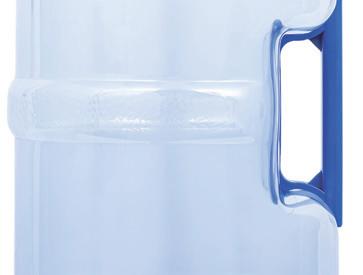




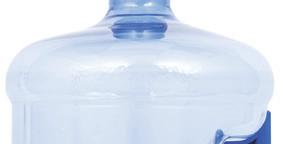
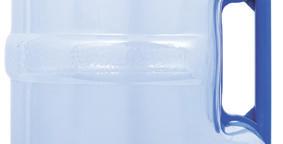
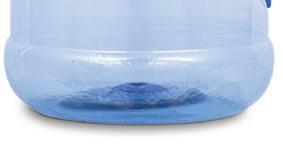


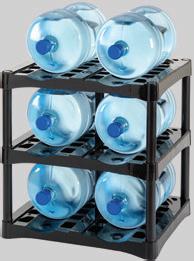
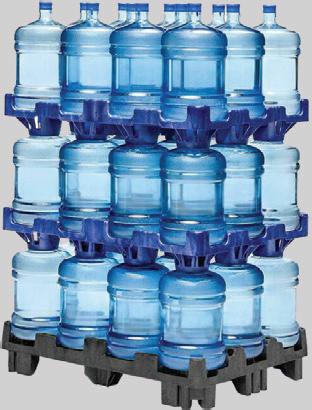

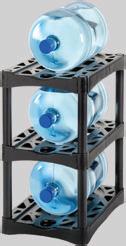



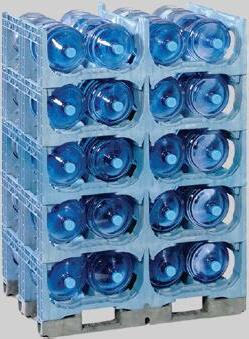


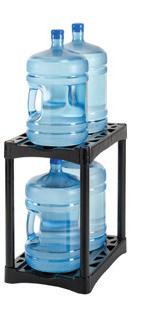

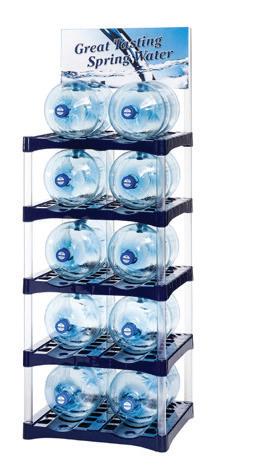

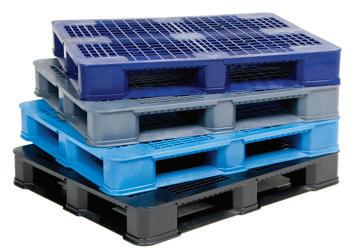
By the time you receive this issue of Bottled Water Reporter, we will be well ensconced into the new year.
No doubt, many people have resolved to drink more water in 2023—and recent research provides more evidence that will hopefully encourage them to keep up this healthy habit throughout the years to come. More and more, the scientific community is exploring the benefits of water consumption. In “Research Shows a Connection Between Hydration and Heart Health” (p.10), Joseph Watso, PhD, discusses some of the interesting results from his literature review that suggests proper hydration has a positive impact on cardiovascular health. Watso, an assistant professor and director of the Cardiovascular and Applied Physiology Laboratory in the Department of Nutrition and Integrative Physiology, College of Health and Human Sciences, at Florida State University, emphasizes the importance of this research, recognizing that heart disease is the leading cause of death in the United States.
Bottled water is one of the means by which life-affirming water is provided to humans— and on a global scale, bottled water is the key to safe drinking water, a point IBWA Chair Henry R. Hidell, III, made during his chair acceptance address at last year’s IBWA Annual Business Conference. In his inspirational speech, Chair Hidell discusses his passion for water, his work, and this association. He also presented the nine tenets he has developed to effectively address the challenges the bottled water industry faces, which we cover in our second feature, “9 Tenets for a Brighter Future,” found on p.15.
Our columns provide a mixed bag of critical information to start off the new year. In the Government Relations column (p.20), we review four key takeaways from the 2022 midterm elections—and offer members a way to get a copy of IBWA’s congressional advocacy plan for the year. The Communications column (p.22) notes that recent Pew Research Center studies show that social media continues to be a trusted source of information—and as such, IBWA's latest recycling campaign is capitalizing on the popular social media trend of producing reels (i.e., short videos). In our #H2OFactCheck campaign, a part of IBWA's Put It In The Bin initiative, it takes just seconds of video time to dispel common myths about bottled water. And our Technical Update column (p.24) announces that the Plant Technical Reference Manual (PTRM) has been revised to include updates on regulatory issues, including the Food Safety Modernization Act (FSMA). Make sure the certified plant operators at your bottling plants are aware of the updated PTRM, as it is the basis for IBWA’s CPO exam.
Lastly, I encourage you to check out IBWA’s 2022 Progress Report by visiting bottledwater.org/ibwa-progress-reports. We accomplished a lot together last year, and I look forward to working with our members and partners to continue that successful legacy in 2023.
Joe Doss IBWA PresidentBOTTLED WATER REPORTER is published for:
International Bottled Water Association 1700 Diagonal Road, Suite 650 Alexandria, VA 22314-2973. Tel: 703.683.5213 Fax: 703.683.4074 www.bottledwater.org
President Joe Doss jdoss@bottledwater.org

Vice President of Communications Jill Culora jculora@bottledwater.org
Vice President of Government Relations Cory Martin cmartin@bottledwater.org
Vice President of Education, Science, and Technical Relations Al Lear alear@bottledwater.org

Director of Conferences, Programs, and Office Administration Vacant
Director of Government Relations J.P. Toner jtoner@bottledwater.org
Director of Communications Sabrina E. Hicks shicks@bottledwater.org
Director of Member Services Cheryl Bass cbass@bottledwater.org
Director of Science and Research Vacant
Coordinator of Conferences, Meetings, and Programs Claire Crane ccrane@bottledwater.org
Communications Coordinator Courtney Miller cmiller@bottledwater.org
Bottled Water Reporter Layout and Design Rose Connelly rozmack@gmail.com Tel: 315.447.4385
Editor Sabrina E. Hicks shicks@bottledwater.org
Advertising Sales Stephanie Schaefer stephanie@bottledwater.org


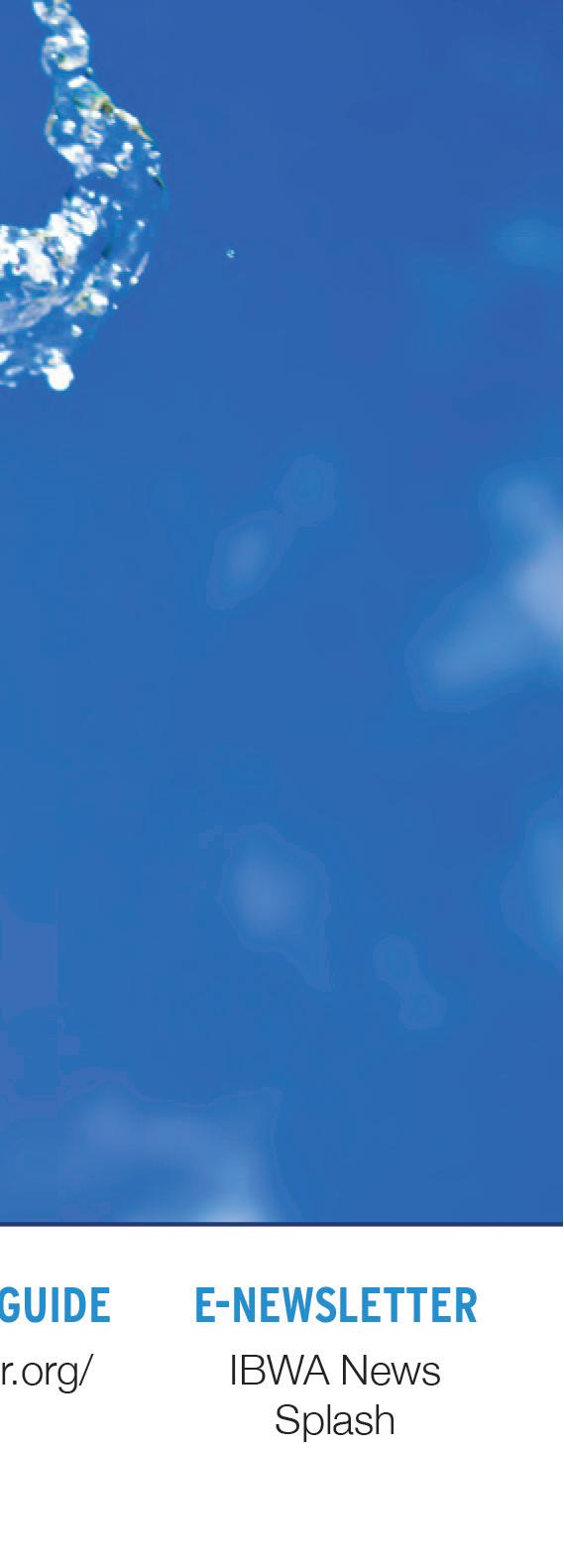

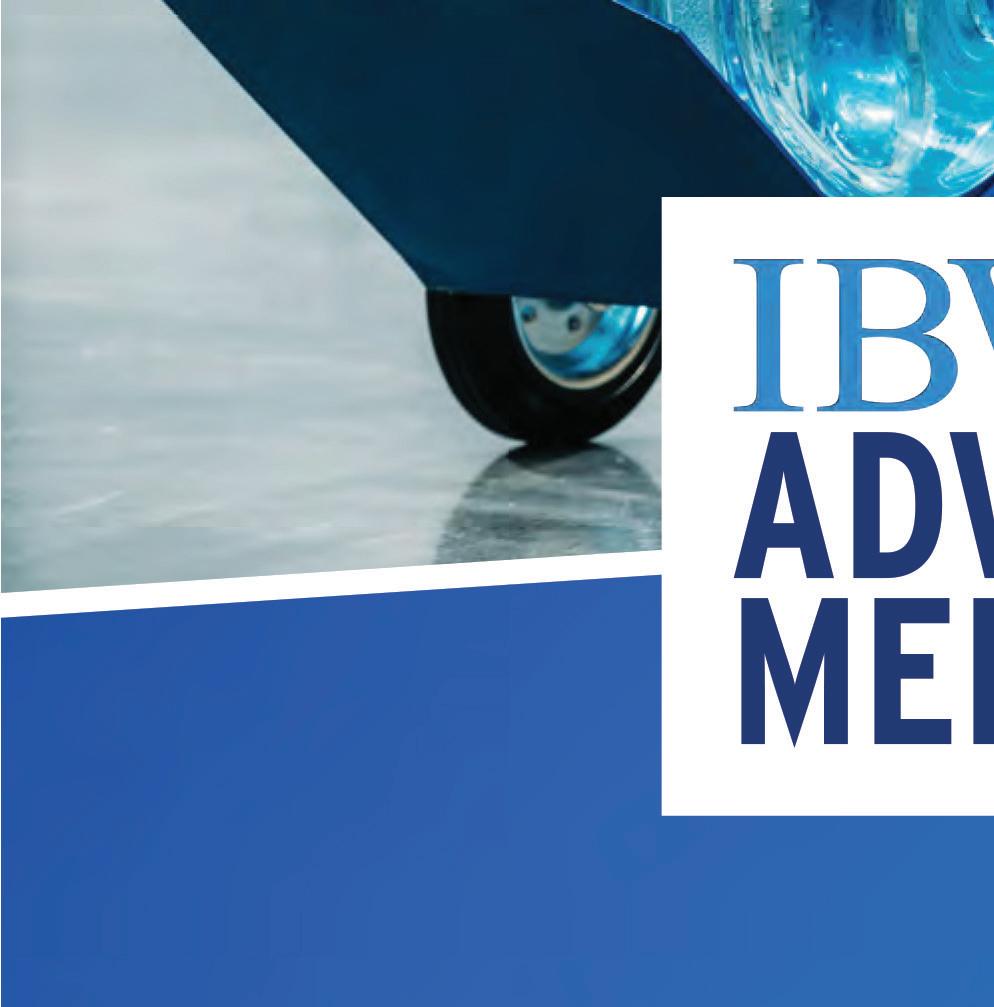
For more information, email stephanie@bottledwater.org .
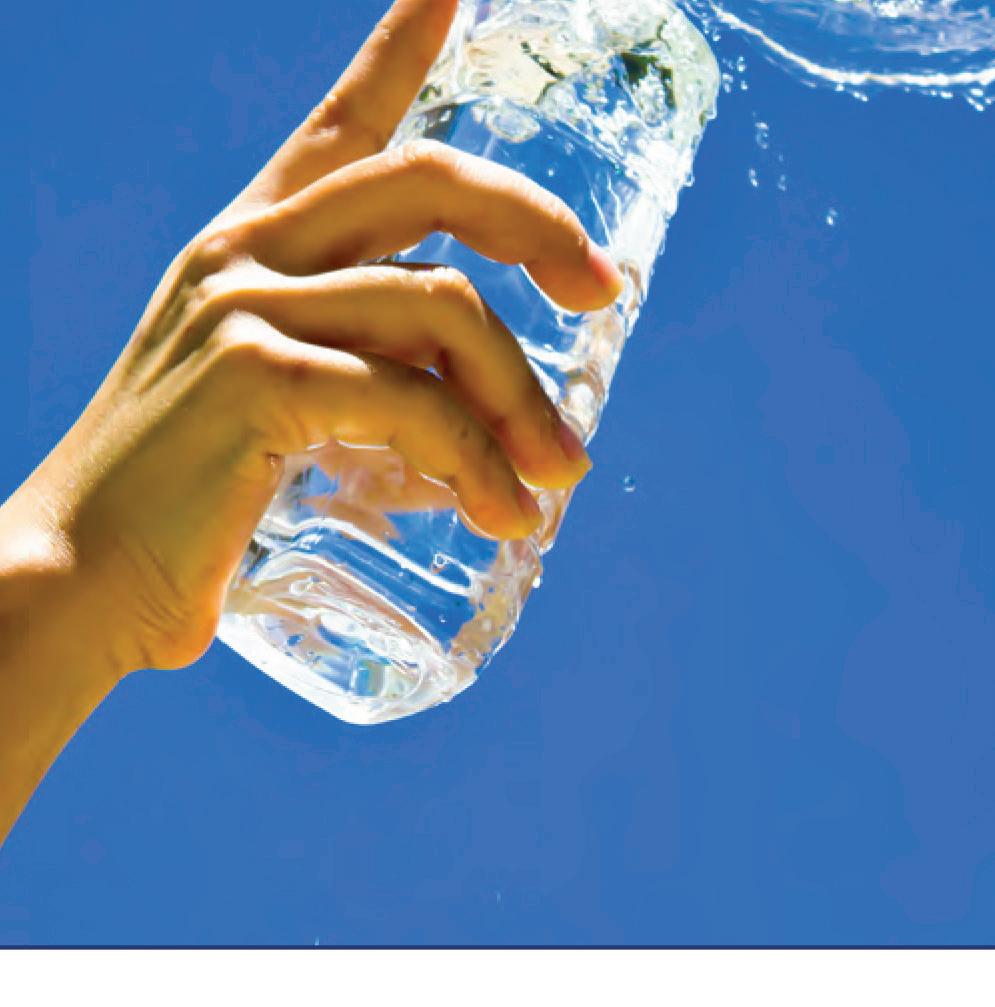

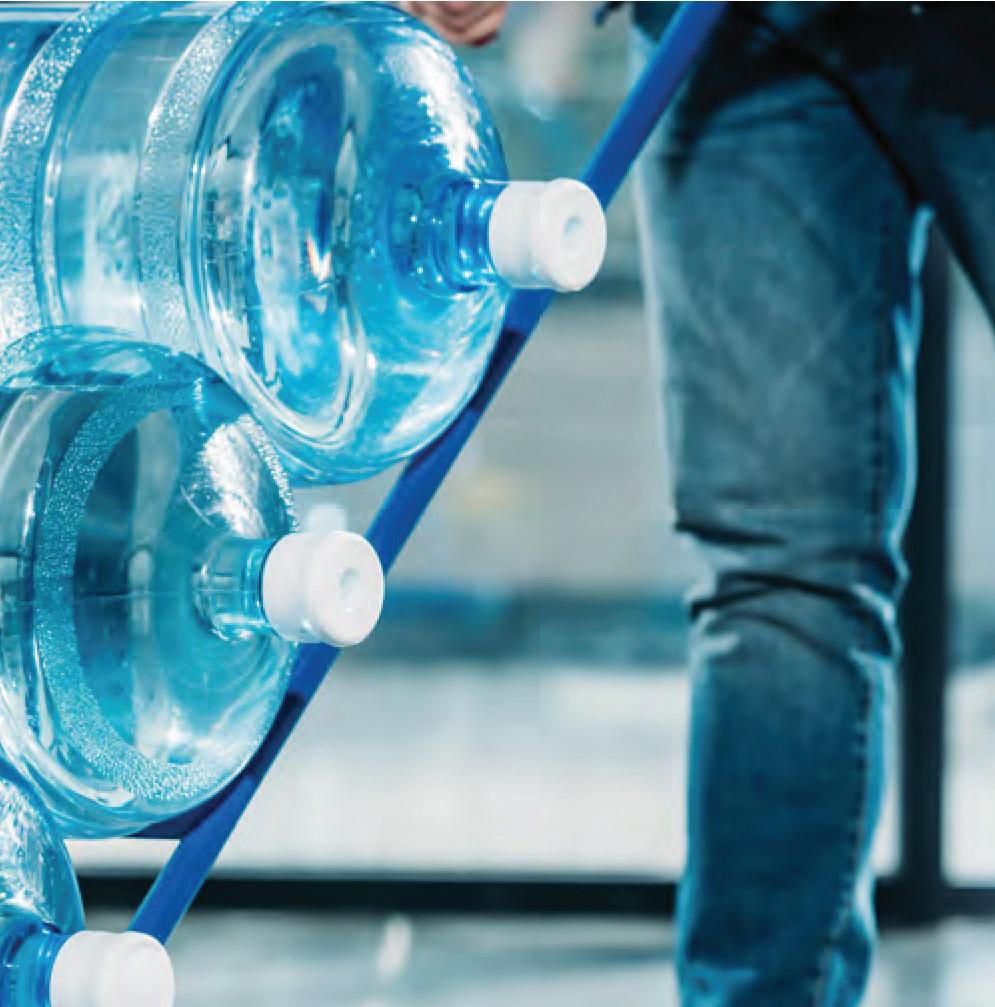

may slow down aging and prolong a diseasefree life,” said Natalia Dmitrieva, PhD, a study author and researcher in the Laboratory of Cardiovascular Regenerative Medicine at the National Heart, Lung, and Blood Institute (NHLBI), part of NIH.
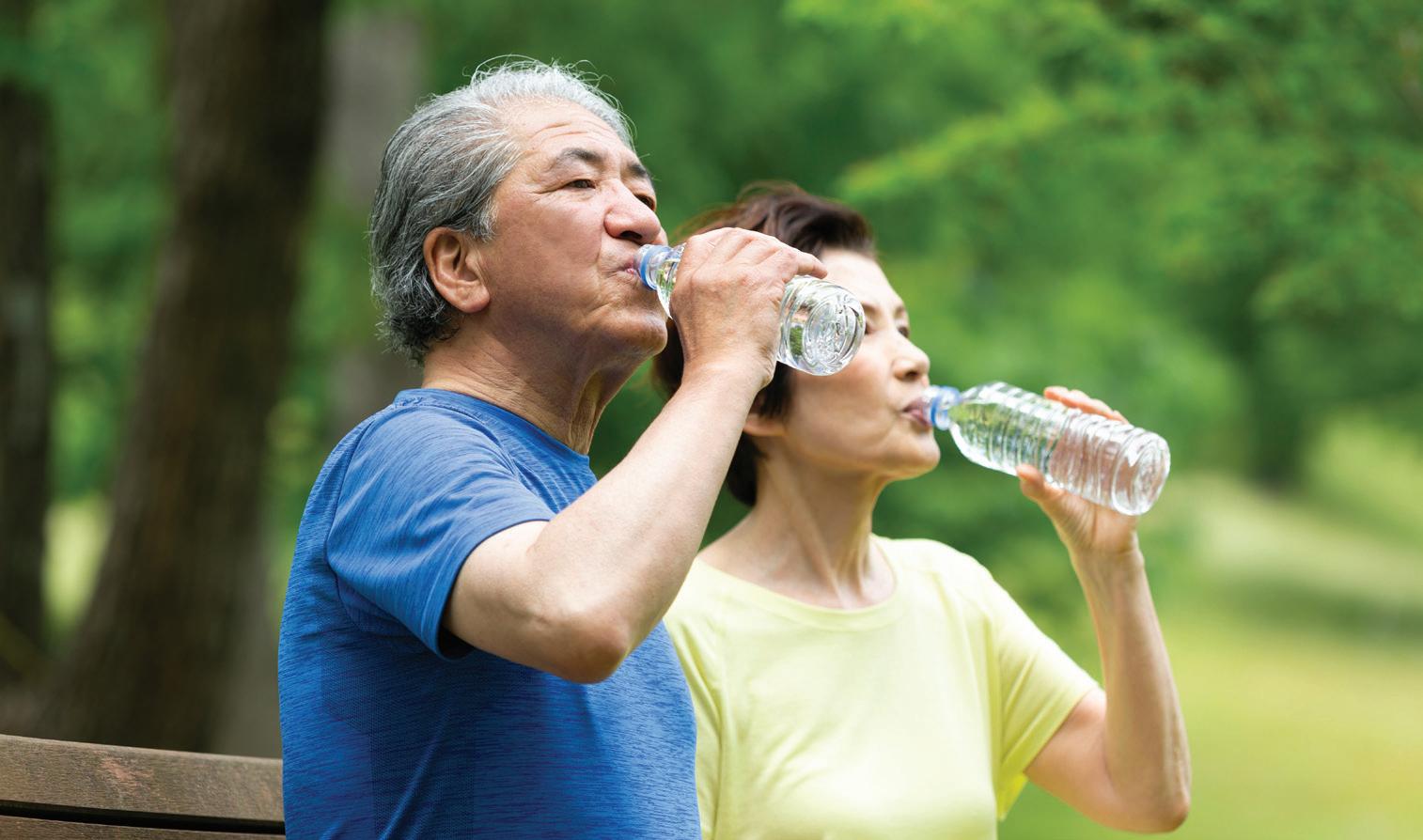
A National Institutes of Health (NIH) study titled “Middle-age high normal serum sodium as a risk factor for accelerated biological aging, chronic diseases, and premature mortality,” published in the medical journal eBioMedicine, found adults
who are well-hydrated appear to be healthier, develop fewer chronic conditions (such as heart and lung disease), and live longer than those who may not get sufficient fluids.
Using health data gathered from 11,255 adults over a 30-year period, researchers
judged how hydrated study participants were by measuring the concentration of sodium in their blood.
Chronically dehydrated people also showed a greater risk of developing diseases like dementia and diabetes.
“The results suggest that proper hydration


Although the findings do not prove a causal effect, they do suggest drinking water, including bottled water, should be part of a healthy lifestyle, just like eating well and exercising.
To read the study, visit bit.ly/eBioMedicine_ Hydration_HealthyAging
In January, IBWA released to members its advocacy action plan for the 118th Congress (2023 and 2024), which provides detailed information on what to expect from the Administration and Congress, and how IBWA will engage on key issues. Specifically, IBWA covers the planned engagements for the following four key issues:
•Prevent Policies That Reduce, Ban, or Tax the Sale of Bottled Water
•Improve Recycling Infrastructure and Education
•Support Critical Trade Reform Policies
•Promote Healthy Hydration
The plan explains the purpose behind why IBWA is engaging on each issue, what actions IBWA will take, potential member actions, who the industry may be able to work with on each issue, and what groups are likely to oppose our efforts. The plan also provides information on IBWA Government Relations Committee meetings, fly-in opportunities to meet directly with members of Congress and their staff, and general information on the IBWA Political Action Committee.
If you are an IBWA member and would like a copy of the federal advocacy plan, please contact IBWA Vice President of Government Relations Cory Martin: cmartin@bottledwater.org
suggests proper hydration may slow down aging and prolong a disease-free life.

2023 June IBWA Board of Directors and Committee Meetings and Capitol Hill Visits June 5-8
Hilton Old Town, Alexandria, Virginia IBWA members only. Meetings begin at 11:00 am on Monday, June 5; end at 10:30 am Thursday, June 8.
IBWA offers members opportunities each year to meet with professionals who have extensive and varied experience in the bottled water industry. These events provide members and staff dedicated time to focus on discussing the direction IBWA will take on issues that are critical to the industry through committee meetings, education sessions, and exhibits.
As of January 5, dates and locations have been finalized for the following meetings and conferences:
BISPHENOL A
2023 Winter IBWA Board of Directors and Committee Virtual Meetings February 21-23

Video Conference IBWA members only. Meetings begin 11:00 am on Tuesday and end on Thursday at 4:00 pm. Meeting schedule will be included in the association's Splash e-newsletter.
2023 IBWA Annual Business Conference and Trade Show September 11-14
Hotel TBD, Las Vegas Held in conjunction with PACK EXPO. Meetings begin 11:00 am on Monday, September 11; end at 12:00 pm Thursday, September 14.
For additional information, contact IBWA Coordinator of Conferences, Meetings, and Programs Claire Crane: ccrane@bottledwater.org.
California’s Office of Environmental Health Hazard Assessment (OEHHA) has confirmed that it will not add bisphenol A (BPA) as a carcinogen under Proposition 65. The Carcinogen Identification Committee (CIC) voted against the listing during its December 14 meeting.
This new decision does not change BPA’s current Prop 65 listing as a developmental and female reproductive toxicant.
The U.S. Food and Drug Administration (FDA) and the American Chemistry Council (ACC) previously submitted comments to the CIC against the listing of BPA as a carcinogen. To review the comments submitted by FDA and ACC, visit oehha.ca.gov/comments and click on “Comment Submissions - Carcinogen Identification Committee Meeting Announcement and Hazard Identification Document Availability.”
Prop 65, also known as the Safe Drinking Water and Toxic Enforcement Act of 1986, prohibits knowingly exposing any
individual to a listed chemical without first providing a “clear and reasonable warning” to such individual. The California OEHHA maintains this list in its role as the lead agency for implementing Prop 65, and the CIC advises OEHHA and serves as the state’s qualified expert for determining whether a chemical has been clearly shown to cause cancer.
OEHHA had selected BPA for consideration for listing by CIC, and the committee recommended that BPA be considered for future listing at its November 2020 meeting. OEHHA solicited comments on BPA’s potential as a carcinogen in January 2022 and published a report titled “Evidence on the Carcinogenicity of Bisphenol A (BPA)” in September 2022. (You can find that report at bit.ly/ OEHHA_Prop65_0922.)
OEHHA’s website provides a link to the CIC's decision: bit.ly/2022CIC_BPA.
If you have any questions regarding this matter, please contact IBWA Vice President of Science, Education, and Technical Relations Al Lear: alear@bottledwater.org.











After two virtual annual conferences due to the COVID-19 pandemic, the IBWA Annual Business Conference and Trade Show was held in-person for the first time since 2019. From November 24-27, 2022, members gathered in Chicago to learn, network, and reconnect with their industry peers. In addition to offering an educational program covering industry hot topics such as cyber security, market trends, and innovative business strategies and an active trade show floor, this year was an “awards year” for the conference. The association holds its awards program every two years because IBWA staff and members know the importance of taking time to celebrate the achievements of the incredible and dedicated workforce that produces and delivers bottled water products.
During the awards ceremony, Robert Smith (Grand Springs Distribution) was inducted into the IBWA Bottled Water Hall of Fame, and, in his acceptance speech, Robert thanked his wife Peggy (left) for her unwavering support.


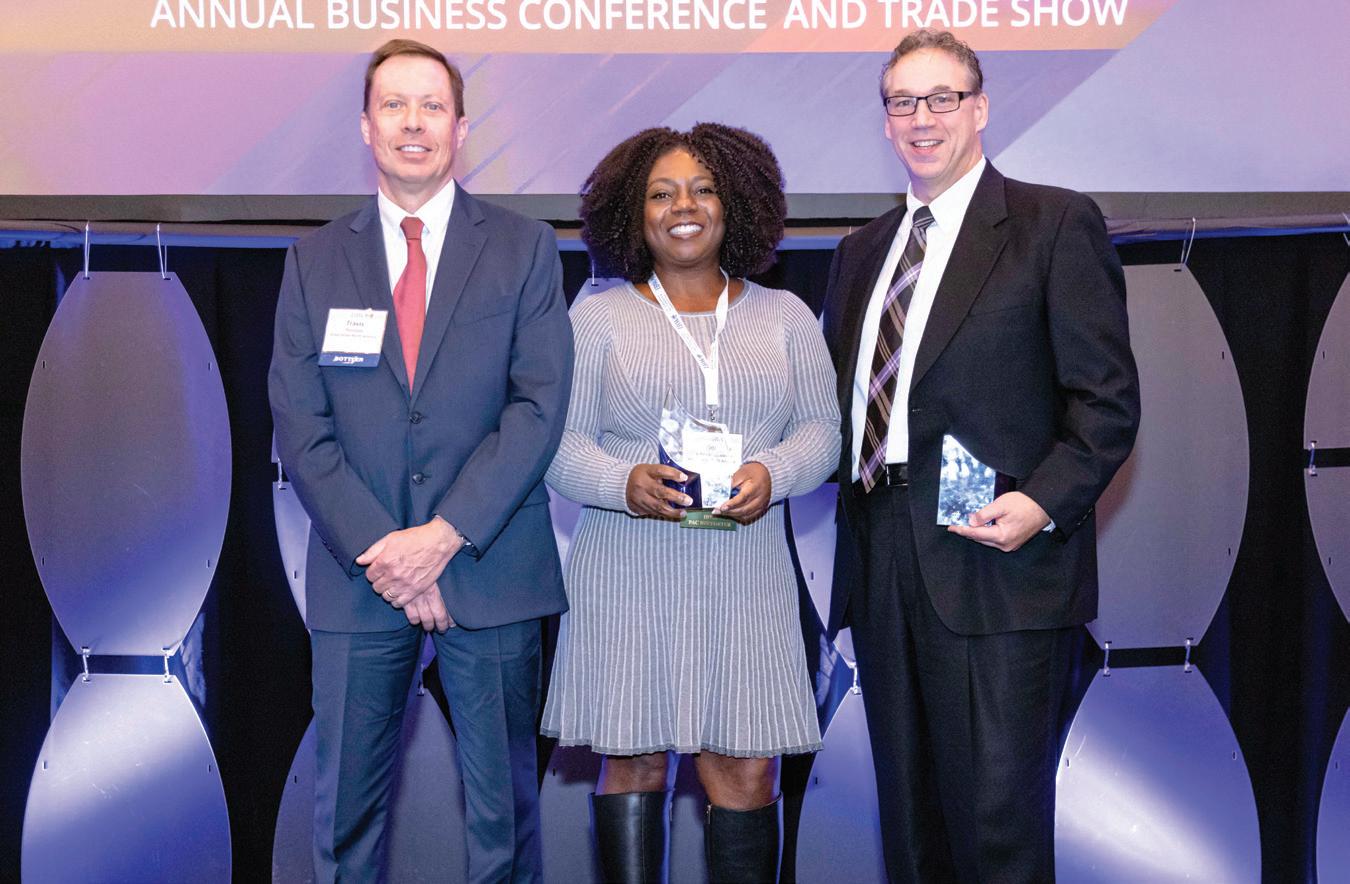









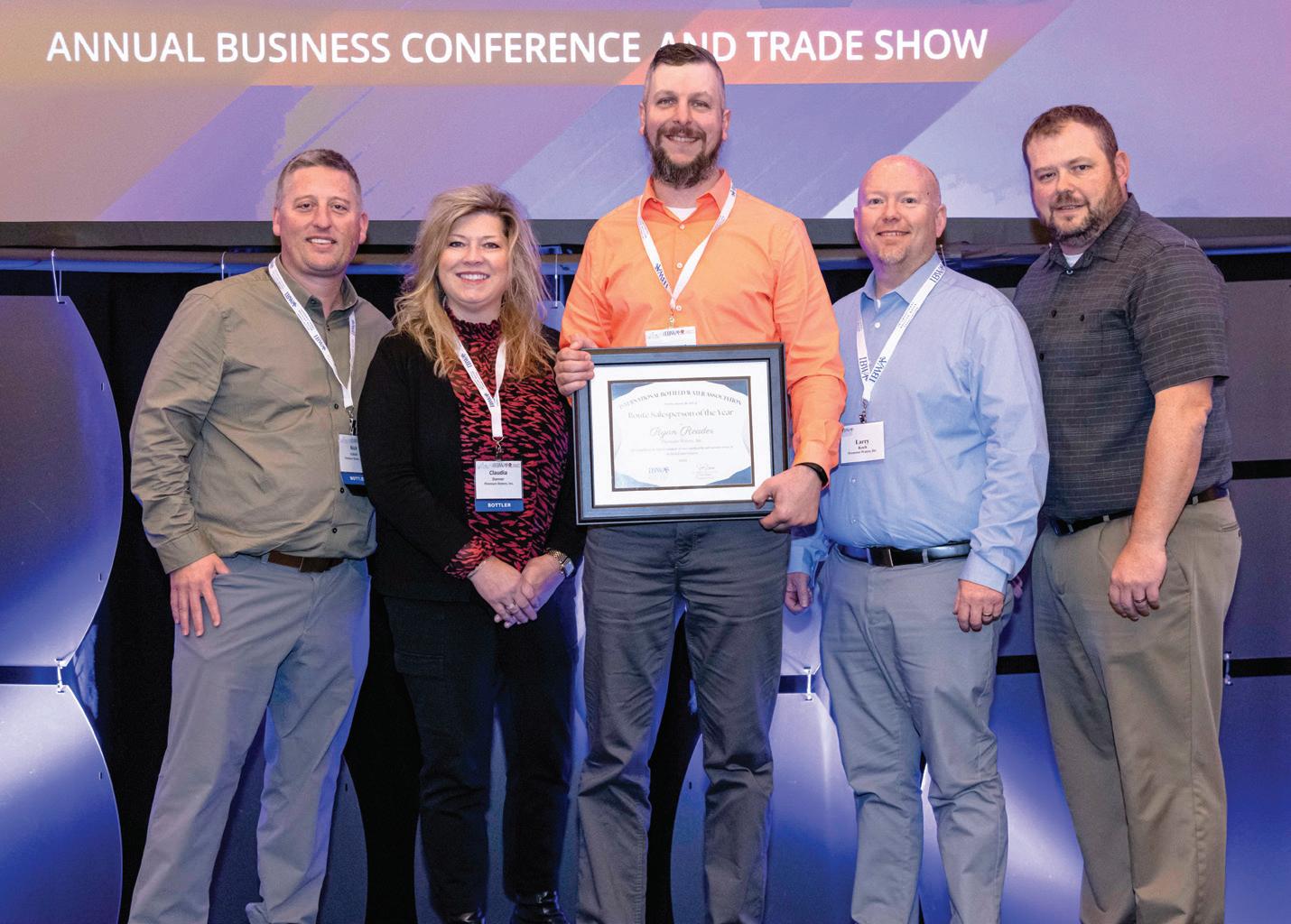




 (Middle) Jeremy Efron (The Waterways Company) accepted the "Up-and-Comer" recognition from Dan Kelly (left). Jeremy was accompanied on stage by Waterways' Vice President of Sales Lynette MacFee (right).
Keynote Speaker Alex Goldfayn discussed tips for increasing sales from his book Pick Up the Phone & Sell.
Primo Water employees earned high honors: Viola Johnson Jacobs (center) was awarded "The Selby," IBWA's Advocacy Award, and Travis Thornton (left) and Lou Vittorio (right) were the recipients of the association's Environmental Stewardship Award.
Altium Packaging’s Dura-Lite Lightweight Packaging for Water won IBWA's Product Innovation Award, which was accepted by John Manderfield and Joe Palmer (middle and right).
(Middle) Jeremy Efron (The Waterways Company) accepted the "Up-and-Comer" recognition from Dan Kelly (left). Jeremy was accompanied on stage by Waterways' Vice President of Sales Lynette MacFee (right).
Keynote Speaker Alex Goldfayn discussed tips for increasing sales from his book Pick Up the Phone & Sell.
Primo Water employees earned high honors: Viola Johnson Jacobs (center) was awarded "The Selby," IBWA's Advocacy Award, and Travis Thornton (left) and Lou Vittorio (right) were the recipients of the association's Environmental Stewardship Award.
Altium Packaging’s Dura-Lite Lightweight Packaging for Water won IBWA's Product Innovation Award, which was accepted by John Manderfield and Joe Palmer (middle and right).
Everyone knows that water is essential for life. It helps the body maintain a normal temperature, lubricates and cushions joints, protects the spinal cord, and assists in the elimination of waste from our bodies, among other things. Scientists continue to explore why hydration is integral to our bodily systems—including cardiovascular health. Research has shown that if you are wellhydrated, your heart doesn’t have to work as hard; it can more easily pump blood through the blood vessels to the muscles; and muscles are able to work more e ciently.
Several researchers recently studying the effect of proper hydration on cardiovascular health identified numerous long-term benefits of proper water consumption, regardless of whether you are young or old. Learning what the researchers have to say about their findings can help water bottlers understand why and how their products impact consumers’ health in a positive way.
People who have a deficit of body water, or “hypohydration,” may experience impaired cardiovascular function, according to Joseph Watso, PhD. Watso is an assistant professor and director of the Cardiovascular & Applied Physiology Laboratory in the Department of Nutrition & Integrative Physiology, College of Health & Human Sciences, at Florida State University.
Recognizing that heart disease is the leading cause of death in the United States, Watso finds the connection between hydration and heart health to be compelling. “When talking about heart disease, blood pressure is implicated; inside the body, the fluid and electrolytes—the salt and water balance–is a major component of how your body deals with blood pressure,” he explains. “So, if you change the amount of salt or water you consume or excrete, that has implications for blood pressure. Having poor blood pressure control can lead to poor heart health in the long term.”
It’s not just older Americans who should concern themselves with the effect of hydration on heart health, says Watso, since hydration in earlier years can have longlasting impacts. For average Americans engaging in any activity, “you need to deliver oxygen and other nutrients to the muscles, and you do that by moving blood around your body,” he says. “With exercise, you need to move blood at a faster rate, so you need to increase blood flow and cardiac output, which is essentially the pump—the heart pump— and how much blood it can move around the body.
“It’s relatively simple: If you have less fluid available, then you have less ability to increase your cardiac output. The heart as
a pump can only do so much if you don’t have blood volume to move around. It’s largely related to the reduction in plasma volume or blood volume, or circulating fluid in the body.”
Watso conducted a literature review of “Hydration Status and Cardiovascular Function” and concluded that hypohydration has a negative impact on cardiovascular health (bit.ly/Watso_Hydration). He identified several ways that acute hypohydration leads to altered vascular function and blood pressure regulation. Watso’s research found that up to half of people may not be meeting hydration criteria, “which is alarming as inadequate water intake is associated with obesity and predicts greater future risk for developing cardiovascular disease.” He also found evidence that suboptimal water intake can be linked to hypertension, thrombosis, stroke, and cardiac fibrosis.
Being dehydrated affects blood flow: The dehydrated person’s body temperature increases and blood flow decreases; lower blood flow affects the brain because it has to strain for more oxygen; and orthostatic hypotension can occur— low blood pressure and dizziness that sometimes occurs when standing after sitting or lying down. Watso points to physics to explain some of these phenomena: “With orthostatic intolerance—when you stand and blood pressure falls—the problem isn’t necessarily that blood pressure falls. The problem is that the brain doesn’t receive oxygen; the brain doesn’t receive oxygen because there’s no blood flow; and there’s no blood flow because there’s not enough pressure generated by the pump.” Watso provides a helpful analogy: “If you put a small amount of water into a pump, then even if you have the best pump in the world, it’s not going to be able to move enough fluid to create enough pressure to get that fluid where it needs to be. And in this case, when you’re moving from laying down or sitting to standing up, about half a liter of fluid in the body automatically falls to your lower body. And if you are already dehydrated and in a low-volume state, then the heart is limited in how much pressure it can generate with the blood that’s available to it in the central cavity to get it to the brain, to keep the brain oxygenated with proper blood flow.”
Acute mild hypohydration in people of all ages can reduce exercise performance, cognitive function, and mood; increase fatigue; and decrease glucose regulation, blood vessel function, thermoregulation, cerebral blood flow, and orthostatic tolerance, says Watso.
He points to an important study conducted by some of his mentors on the effect of hypohydration on young healthy adults and their endothelial function. “Endothelial dysfunction [a metric that impacts the regulation of blood pressure and perfusion due to narrowing of the large blood
Watso’s research found that up to half of people may not be meeting hydration criteria, “which is alarming as inadequate water intake is associated with obesity and predicts greater future risk for developing cardiovascular disease.”
A recent study found that a small degree of hypohydration induced by moderate exercise, followed by fluid restriction, significantly impacts blood pressure and the passage of blood through the blood vessels.

vessels on the heart’s surface] is a clinically significant marker of cardiovascular health,” says Watso. In this study, 10 young healthy adults were asked to complete 100 minutes of low-intensity intermittent walking to achieve hypohydration of -2% of individual body mass, followed by a standardized low-water-content diet for the rest of the day (bit.ly/Arnaoutis_Hypohydration). The research team found decreased plasma volume and increased plasma osmolality, which Watso explains “suggest that a small degree of hypohydration induced by moderate exercise and fluid restriction significantly impaired endothelial function”—which impacts blood pressure and the passage of blood through the blood vessels.
Even mild dehydration can be problematic. “Typically, a body mass change of less than 2% would qualify as mild dehydration,” says Watso. Given all the studies Watso has been involved in and reviewed, he recommends that all people seek a state of euhydration, or “optimal total body water content.” In determining the “optimal” amount of water, “a good starting point would be to follow the recommendations of the International Institute of Medicine, which suggests 2 liters of fluid per day for females and 3 liters of fluids per day for males.” But that amount may vary from person to person, depending on size and activity level. “In reality, there are a lot of other interactive factors,” he says. “If you’re in a very humid environment, don’t sweat very much, and don’t exert yourself very much, you may not lose too much water throughout the day. But if you’re active, or in the heat, or in
a very dry environment where you’re losing a lot of sweat through evaporation,” then you need to drink more water.
Even more troubling would be individuals who regularly drink too little and suffer from “underhydration” or “chronic dehydration,” when they regularly lose more fluid than they take in, and have an insufficient amount of water in their bodies. “There are measures you can make from blood and urine markers that can give you insight into somebody’s hydration status,” he says. Elevated biomarkers over a long period—suggestive of dehydration—could be detrimental. While there is not a lot of data on this topic, “it’s pretty clear that those who are chronically not meeting those biomarker thresholds do have a higher rate of morbidity and mortality for certain disease states.”
Reversing the effects of chronic dehydration gets more difficult with age, notes Watso. “For the most part, increasing water consumption will help,” he says. Individuals in their 30s who increase their water intake will be more successful than people in their 70s who have already developed disease states related to generally unhealthy patterns.
Watso also cautions the senior population not to wait for “the thirst sensation” to kick in before drinking water. In fact, some studies have shown that seniors may have a reduced sensitivity to thirst, which puts them at greater risk of dehydration. “When you’re older, those [thirst] signals aren’t coming to you, so you need to be much more proactive in making sure you’re drinking water.” Older adults “have a host of factors that can essentially reduce their body’s ability stay hydrated.” In addition to
If you make water convenient and easily accessible, people, including children, will help themselves to healthy hydration.


reduced thirst sensation, there also are different hormones that can control how the body regulates salt and water balance—such as vasopressin (AVP). “And even if you do have enough of that hormone circulating, the kidney is in charge of salt and water retention, and the kidneys are not as responsive to AVP with aging,” Watso says.
• The National Academy of Sciences. Dietary References Intakes for Water, Potassium, Sodium, Chloride, and Sulfate. www.nap.edu/read/10925/chapter/6#102 Accessed 8/5/2019.

• National Library of Medicine. Hydration Status and Cardiovascular Function. www.ncbi.nlm. nih.gov/pmc/articles/PMC6723555
• National Library of Medicine. The effect of hypohydration on endothelial function in young healthy adults. pubmed.ncbi.nlm.nih. gov/26864199
• Science Daily. Brain Malfunction Explains Dehydration in Elderly. www.sciencedaily.com/ releases/2007/12/071217192400.htm
• National Library of Medicine. Smart snacks in universities: possibilities for university vending. www.ncbi.nlm.nih.gov/pmc/articles/ PMC7722994
• American Journal of Nephrology. Association between Water Intake, Chronic Kidney Disease, and Cardiovascular Disease: a Cross-Sectional Analysis of NHANES Data. www.karger.com/Article/Pdf/350377
Watso encourages bottled water companies to help spread the word about the importance of drinking water for healthy hydration. He suggests that increasing availability of water—via water-filling stations, 5-gallon jugs, and other containers—in homes, office buildings, transportation centers, and senior living arrangements could be helpful. “People seem to be driven by incentive, rather than knowledge, because a lot of people know more than they act upon,” he says. He also suggests that more vending machines stock water as a beverage choice. “There was a recent study published on vending machines in university settings and swapping out, for example, sugary snacks with more healthful snacks.” Researchers found that making “smart snacks” easy, convenient, and preferable could assist students in reducing sodium, fat and added sugars. “Perhaps if there were more vending machines where you could get water [rather than machines with sugary sodas and fruit drinks], then that might be helpful.”
The Benefits of Drinking Water Bottled water companies should take note of all of the recent research, including studies by Watso, that point to the health benefits of hydration. While many of the negative heart health effects don’t become visible until older age, studies demonstrate that developing healthy drinking habits early can prevent chronic hypohydration and help prevent future cardiovascular issues.
While “hydration” can include water in beverages other than plain drinking water, some studies have demonstrated the benefits of drinking plain water. In a 2013 study on the association between water intake, chronic kidney disease, and cardiovascular disease, the research team found evidence suggesting a “potentially protective effect of higher total water intake, particularly plain water, on the kidney.” While the team’s primary analysis considered total water intake from all foods and beverages combined, “sensitivity analyses showed that chronic kidney disease was inversely related to higher intake of plain water, but not other beverages.”
There is still much to learn about the effect of water consumption on the body, but it is clear that consuming appropriate amounts of water—to achieve euhydration—should be a goal for everyone. By sharing some of the health benefits of water with customers and spreading the message that children should establish a thirst for water early on, bottlers can play a key role in contributing positively to public health discussions. BWR
christineumbrell@gmail.com.


 By Henry R. Hidell, III
By Henry R. Hidell, III

Abridged version of Mr. Hidell's chair acceptance address, presented during the 2022 IBWA Annual Business Conference
I am so deeply honored to accept the chairmanship of the International Bottled Water Association (IBWA). I am the first non-bottler chairman in the long and important history of this organization. IBWA plays a very significant role in the bottled water industry as our legislative and regulatory lobbyist at the state, local, and federal level and the voice of the industry with the public and the media.

IBWA’s suppliers have played a major role in supporting the organization over its 64 years. The suppliers have assisted in addressing legislation and regulations that impact how and what we can supply to our bottled water customers. They have played a major role in the sustainability practices of the industry. Our Supplier and Convention Committee has been a strong leader in our business conferences, board meetings, and technical and innovative contribu-
tions—from bottling equipment, filtration, to the science of the safety of our products. I want to thank our supplier members for their long and generous participation in IBWA. Thank you!
I also want to acknowledge the good fortune we have enjoyed in the quality and dedication of the IBWA staff. I cannot tell you how much I have appreciated the assistance each of you have given me as I have traversed the IBWA meetings and my ineptitude of keeping
track. You are each endeared to me for so many good reasons. You have been a professional attribute to this organization’s existence. Joe Doss, for the past 23 years, your leadership and guidance and energy has set the standard for all of us. Thank you!
Mr. Robert Smith, congratulations on your induction into the Bottled Water Hall of Fame.
I especially want to thank CR Hall for his extended chairmanship of IBWA. CR, you have led this organization through some difficult times including having to run the chairmanship by zoom. What a great job you did.
Since I am the first supplier chairman, I want to give you a sense of my pathway to standing before you this morning— how I got here. It has been a long and winding road. I think it will be important to understanding the achievements I hope to gain as your chairman over the next year. I am a “futurist.” My entire

OUR PRODUCT BENEFITS ARE NOT ONLY SUPPORTING HUMAN HEALTH BUT ALSO GIVING A ‘VISION OF HOPE’ IN TIMES OF CRISES. . . WE ARE ALWAYS THERE SUSTAINING LIFE AND GIVING HOPE.
education and my life have been lived well into the “future of things,” whether technology, economics, social evolution, or the use of the Earth’s available resources. My mentors and professional experience influence how I view IBWA, its members, and its future role for generations to come. Water has and will continue to be an essential geopolitical and economic focus. We cannot have war without water. We cannot have peace without water. We cannot have a productive economy without water, and we cannot have civil order without water.
We are about delivering safe drinking water to humans in a variety of formats, from 5-gallon HOD products to small-packs of half liter PET to point-of-use technology. Our product benefits are not only supporting human health but also giving a “vision of hope” in times of crises, whether from civil disorder, famine, hurricanes and floods, infrastructure failure, or disease bearing pandemics or climate change. We are always there sustaining life and giving hope. Deep within the human spirit is a sense of survival. It is this inherent human drive to live that is built into our very DNA. Water is essential to this vision, this natural inherent drive. Those of us sitting here this morning are in a “good business doing good things.”
Here is how I arrived here today, standing on this stage looking at the future before you all. These folks have been my mentors.
• Dr. Alvin Kinard – my undergraduate geology professor who gave me a pathway to understanding earth sciences and drove me to examine water closely.
• Dr. Gordon Bowles – was an anthropologist and the chairman of the Anthropology Department at Columbia University in the 40s and 50s. He taught me how and why people migrate and why water is the facilitator of migration.
• Jean Gottmann – one of my two regional land use planning advisors in graduate school. He wrote the Twentieth Century Fund’s seminal work entitled, Megalopolis. These are global, cities of dense urban confines. He referred to these massive urban bodies as “transactional regions.” An example is the megalopolitan conglomeration of population stretching from Boston to Richmond. He taught me that these regions transcend sovereign boundaries, economic boundaries, social and physical boundaries.
• Buckminster Fuller – Bucky, as he was affectionately called, was one of the great futurists of the 20th century and my other graduate advisor. He could see the future. He taught me two critically important things. The first was that my knowledge of the science of water should be my life’s endeavor. The second was about “details.” He said, “Mr. Hidell, If you don’t know the big picture, the details don’t matter.”
• Peter Baker – Peter is one of the Baker Boys. His grandfather was the founder of Crystal Rock Bottled Water Company. His father Henry was a major supporter of IBWA and a board member for many, many
years. Peter said to me now nearly 40 years ago, “Bob, you should join IBWA.” He explained what IBWA did. I asked, “So what can I do?” He said, “Anything you want to.” I said, “Cool.” I joined IBWA. Here I am now standing as your chairman –Very Cool!
• Cindy Toth – Cindy is my wife. She is also the director of administration of Hidell International. She has supported my activities at IBWA and, of course, the business. I am grateful.
• Kathy Ransome – Kathy is a partner and managing director of the Equity Partners Group at Hidell International, a position she has held for over three decades. She is considered one of the financial gurus of this industry.
I am forever indebted to each of these people for their vision and caring that I understand the nature of “future.”
I am here to lead and get stuff done. I am here to listen, to plan, and to execute. I hope that you will join me as we move into the future. The world has changed dramatically as a result of a Covid-19 pandemic. The past few years have impacted all endeavors of human behavior, including how we view the future, how we communicate, how we deal with isolation, and how
we view our future lives. In addition to the pandemic, we must face the ravages of climate change. We must acknowledge that climate change is real. We are seeing its immediate influence on drought, storms, and property destruction and the destructions of lives. We, the humans, are the ones that now must change our view of our world and civil society as we have known it. We must look at new and meaningful assumptions about our businesses, our purpose, and our future. I recently wrote an article for the Northwest Bottled Water Association (NWBA) magazine. In that article, I summarized in two paragraphs my opinion of the single-most critical element of our industry’s future. My view of our single greatest threat results in my nine points (outlined below) of how we must proceed in our effort to remain relevant in the time of social, political, and environmental upheaval. Our future will depend on the Multi-generational Legacy Decisions we must make.
In that NWBA magazine article, I wrote the following:
It is my opinion that as we navigate the issue of water access in a time of climate change, this industry will witness challenges to its right to water, its right to make a profit as a private enterprise and finally in the face of diminishing
water resources, justify the industry’s very existence which is coming under challenge each day as less and less water is available to municipalities and agricultural entities. The fact that I started this paper with a front-page article about the lack of water in the Colorado River Basin from the Wall Street Journal indicates the level of interest now in the public domain about water and access to water.
It is my opinion as climate change takes hold, water resources will experience fundamental tsunami like changes. These will be realized in the political, social and economic arenas which will result in an over-riding of traditional ownership of all water whether surface waters or aquifers. These will not be brought within the usual confines of doctrines of ownership such as Riparian Rights or Prior Appropriation but within the legal concept of the Public Trust Doctrine. This doctrine espouses that certain natural and cultural resources are preserved for public use and that the government owns and must protect and maintain these resources for the public use. Keep in mind that doctrines are not necessarily converted to law but are the practice of the land at a moment in time and a confirmation of tradition. Riparian Rights are private property rights and as such are subject to the Public Trust Doctrine. It is this doctrine that has been a foundation to the environmental
policy makers. It is also this doctrine that will be used to override private property rights and ownership. This doctrine has been applied across the nation in the preservation of water resources and coastal tidelands preservation for the public good.
Some of IBWA’s major bottler members have already experienced the impact of the application of the Public Trust Doctrine and are presently in the courts trying to save their rights of access to their long-held water sources. There is a growing body of case law that supports this Public Trust Doctrine. It was first applied to water to save California tidal wetlands and has now shifted to water resources in general. I have developed some guiding tenets for effectively addressing the challenges we face and to begin a new approach to create a power base to ensure a bright future for our businesses and the bottled water industry in general. These nine tenets are:
1. We are the most important industry in the world today. We are the future of safe drinking water. We must start behaving as the most important industry and stand our ground with those who think we are a luxury and an unnecessary burden on the environment. We are in fact, the most efficient use of water for human consumption. This need for bottled water will become a more and more common event as climate change continues to take hold.
2. We are one of the means by which safe drinking water is provided to humans. Others, such as POU systems and municipal systems, are also capable of delivering safe drinking water. We each have a place and an important role to play in human health and wellbeing as we witness the ravages of climate change on our cities and our human populations.
THESE NINE TENETS WILL HELP IBWA EFFECTIVELY ADDRESS THE CHALLENGES WE FACE AND ENSURE A BRIGHT FUTURE FOR THE BOTTLED WATER INDUSTRY.
3. We must create a presence of power to address the future. We must form a coalition of the water industry to manage the regulatory agencies, the human demand, and where we each play a vital and similar role of delivering water in some format convenient to human need. The coalition must be of groups like the Water Quality Association (POU), AWWA (municipal water works), ABA (beverage manufacturers), and Nature Conservancy (conservation groups).
4. This coalition must be focused on the management and preservation of our water resources. We must evolve into an inclusive body of willing partners. Our strength will emerge as we join our industry partners in keeping the public drinking water safe and available without risk of eminent domain takings.
5. The water industry, whether bottlers, POU manufacturers, or municipal bodies must be considered as an essential industry. In a time of crisis, largely from the impact of climate change, we must come together and support the importance of each means of delivery of water.
6. On a global scale, bottled water is already the key to safe drinking water. Many countries have not built massive public distribution systems. Their only source of safe water comes in bottles. As urbanization continues megalopolitan regions will transcend all boundaries, many nations will be unable to support a budget to develop or expand existing water supplies.
7. As the leader in the bottled water industry, IBWA must support a global coalition of bottlers, municipal suppliers, and POU purveyors to address the water needs. We must remain an active contributor to the International Council of Bottled Water Associations (ICBWA).
8. We must continue our vigorous support of the Drinking Water Research Foundation (DWRF) to provide research that supports this industry and all industries that provide healthy, human hydration.
9. We must work closely with government regulatory agencies to ensure their understanding of our industry and its role of our stewardship of water resources. We must reach out and provide ideas and propose legislation.
These nine items will be my agenda for the next 11 months. We must act to protect our water resources and allow our presence to be felt at every place in which the subject of safe water is discussed.
I end my comments on a difficult and threatening concern. As your leader, I will not ignore or lessen the importance of this matter of who owns the water.
I ask you to join me in this effort. I ask you to consider how we create a meaningful coalition of our industry players regardless of their means of delivering water. Join me in the Situation Room, take action, and contribute your thoughts about how we gain strength and continue to demonstrate to the consumer the importance of this industry. BWR
Henry R. Hidell, III, is the current chair of IBWA and the founder of Hidell International.

Political enthusiasts have taken a deeper look into the election results for the 2022 midterm elections—and the reasons behind them. As we are now in what is likely to be one of the most controversial and contentious election seasons culminating in 2024, here are four key takeaways from the recent elections to keep in mind.

We have now experienced several elections where pollsters’ results have been way off the mark. Predicting
election outcomes is obviously getting harder and harder, as more and more races seem to come down to the wire. Combine that with the recent redistricting efforts across the United States, you realize that researchers are having to consider a whole new set of data, demographics, and electorate for a good number of races. That makes predicting election outcomes like trying to choose winning lottery numbers.
But there are some ways to better interpret poll results that can provide an idea of what to expect in 2023 and
beyond. First, look at the long-term trends, the past several elections, changes in the state and/or districts (this could be anything from population to age demographics to home prices), and how the media suddenly shifts its coverage. Also, pay close attention to who conducted the poll. Most groups tend to trend favorably to one of the parties and that will skew numbers.
Welcome to the Party, Gen Z Candidates, parties, polls, and assorted other election watchers have been
saying for a while now that the youth vote will tip the scales. For many years, that did not come fruition— until 2022. In the November 2022 elections, Gen Z (voters under the age of 30) undoubtedly pulled what was expected to be a rough night for Democrats from the depths and made monumental strides in changing several “predestined” outcomes.
The youth vote was a major advantage for Democrats in 2022, as their usual supporters have not been so solidly behind them in past elections. Numbers showed that women and minority groups, usually strongholds for the Democrats, have become somewhat disenchanted as their votes are being split among various candidates. Nowhere was this more evident than in the race for governor in Oregon. Almost always an easy Democratic hold, even the most liberal Oregonian voters were expressing their dismay with the lack of support on important issues on the progressive agenda. Could this foreshadow within the Democratic ranks an uprising similar to what the Republicans faced with The Tea Party?
The 2022 election season saw a more divided electorate than ever experience before, and there are no signs that the gap will lessen. In previous years, a few issues were a top concern for voters, no matter their party affiliation. In 2022, however, the issue division was greater than in recent memory. Democraticleaning voters had reproductive rights, the environment, and social issues high on their list of concerns. For Republican supporters, it was all about the economy: inflation, gas prices, jobs, taxes.
That disparity impacts who gets into office. For the three major bodies that were affected by the 2022 elections (i.e., U.S. House, U.S. Senate, and
governors), there has never been a closer margin of D vs. R across the board. That demonstrates the clear divide between Democrats and Republicans, left and right, liberal and conservative.
In several races, candidates were mediocre at best. If another strong candidate was on the ticket, however, they helped to move the needle for the less admirable, hopeful legislators. That was apparent in two key state races: Pennsylvania and Georgia.
In Pennsylvania, Republican candidate Mehmet Oz and Democrat John Fetterman were in an intense battle for a Senate seat, and Oz looked to be in the lead as election day approached. After a rough debate for Fetterman, it looked like Oz would hold onto the seat for Republicans. However, the down ticket race for governor, likely swung the final vote in Fetterman’s favor. Democratic candidate Josh Shapiro took a commanding lead over his Republican challenger, Doug Mastriano. That pulled in Democratic voters, who then supported Fetterman, especially in the state’s urban areas.
The opposite occurred in Georgia, where Republican Herschel Walker, who held a significant lead in the weeks before the election, saw that slip away to challenger and incumbent Democrat Raphael Warnock. Surrounded by controversy, Walker’s lead dissipated in the final days giving way to what looked like a Warnock victory. But the strength
of the campaign of incumbent Republican Governor Brian Kemp likely pulled Walker to a near dead heat with Warnock that allowed for a December runoff. Ultimately, Warnock beat Walker with 51.4% of the vote.
Those of us who work in the political realm will surely pull a lot of information and insight from the 2022 elections. That said, we’ll have to be a quick study as the campaigns for 2024 started on November 9, 2022. We only have two years to understand the lessons learned. But, we also have to remember this: Changes are not permanent, but change is. BWR
IBWA has developed an advocacy action plan for the 118th Congress. It provides detailed information on what to expect from the Administration and Congress. The plan also reviews planned engagement for the following four key issues: preventing policies that reduce, ban, or tax the sale of bottled water; improving recycling infrastructure and education; supporting critical trade reform policies; and promoting healthy hydration. Members can get a copy by contacting IBWA Vice President of Government Relations Cory Martin: cmartin@bottledwater.org.
THE
Results from two Pew Research Center studies published in 2022 show that, across the globe, people say they stay more informed thanks to social media—and in America, the “under 30s” are just as likely to trust information from social media as they are from local and national news organizations. This data emphasizes how important it is for IBWA to continue working to ensure positive and accurate information about bottled water can easily be found on the association’s social media platforms.
An abundance of misinformation about the bottled water industry and our products can be found online. However, as the leading voice of healthy hydration and the bottled water industry, IBWA curbs the influence of that false infor-
mation with bottled water facts. We present our messaging in a variety of ways (e.g., IBWA’s bottledwater.org website and “H2O In The Know” podcast), and, through our social media channels, we can expand the distribution of posts and campaigns to ensure they reach specific audiences, when necessary.
IBWA members can boost the association’s efforts to populate the web with bottled water facts in two ways: (1) upload posts from the social media toolkits IBWA produces each month and (2) post content from the association’s theme-based social media campaigns. IBWA’s toolkits are designed to help members fill out their social media calendars by providing posts that are ready for cut-and-paste use or as
inspiration to create posts of their own. IBWA’s social media campaigns offer a similar opportunity, but campaign posts typically focus on one topic, such as recycling or the industry’s minimal water use.

IBWA’s current active campaign–#H2OFactCheck—comes under the auspices of our Put It In The Bin initiative (www.PutItInTheBin.org). Harnessing the power of social media, Put It In The Bin’s content is created for use by both IBWA members and likeminded partners. By encouraging other recycling-focused organizations to use our social media materials, we can vastly expand the reach of our consumerfocused, recycling educational content.
With #H2OFactCheck, IBWA’s goal is to dispel common myths associated with recycling PET and HDPE containers, especially water bottles. For the first time, IBWA is using in-house produced reels (i.e., full-screen, vertical, short videos) to broadcast a lot of information about the recyclability of plastic bottles in a little amount of time. Learn more about some of the topics we cover in our latest social media campaign below.

Not all plastic is recyclable. The phrase “single-use plastic” is becoming a popular way to describe plastic that is used only once before being disposed. Oftentimes, PET plastic water bottles get lumped into this category, but they don’t belong there. PET and HDPE plastic are always 100% recyclable, which sets these containers apart from other plastic items that are truly “single-use,” such as plastic cutlery, plates, and take-out containers. This #H2OFactCheck reel educates people by advising them about plastics that are rarely recyclable (those with recycle symbols #4, #5, and #6); therefore, those items are truly single-use and should never be placed in a recycle bin.
PET plastic drink containers can be recycled over and over again. A common myth that is often perpetuated on social media (and repeated in IBWA’s meetings with elected officials) is that PET

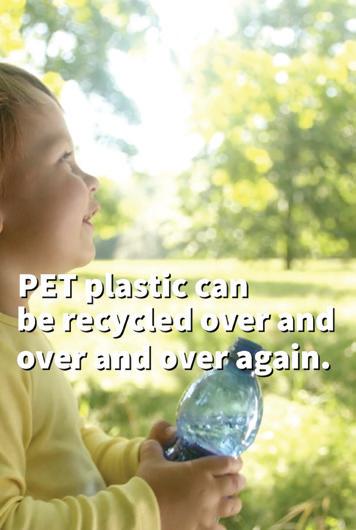

plastic bottles can only be recycled a limited number of times. However, the National Association for PET Container Resources has clarified that statement, noting that “[a] PET bottle can be recycled over and over again. It’s true that there’s some change in the recycled PET that occurs with repeated recycling heat histories, but these can be addressed during the recycling process" (napcor.com/ frequently-asked-questions). And the recycled PET (rPET) can be used to make new bottles or other products, such as clothing, shoes, and carpeting.
PET plastic bottled water containers have the smallest environmental footprint of all other drink packaging. The spread of false information about PET plastic is causing people to believe that using alternative packing will be better for the environment. However, the opposite is true. PET plastic water bottles have the smallest impact on the environment compared to all other packaging types. This #H2OFactCheck reel points to numerous independent research studies that have all concluded PET plastic bottles use the least water and energy and generate the least amount of greenhouse gases compared to aluminum, glass, and laminated cartons.
Bottled water is 100% regulated, recyclable, and intended for hydration.
Another false claim that people sometimes believe is that bottled water is not regulated as well as tap water. By federal law, U.S. Food and Drug Administration (FDA) regulations governing the safety and quality of bottled water must be as protective of the public health as the Environmental Protection Agency (EPA) standards for tap water. (See 21 U.S. Code §349.) In addition, this reel emphasizes the fact that bottled water containers are 100% recyclable (including the cap) and, unlike tap water, bottled water is 100% intended for healthy hydration.
IBWA encourages all members to visit www.PutItInTheBin.org, the campaign website, to access and use these educational reels on your social media channels to help correct the misinformation about bottled water that lives on the internet. On social media, misleading posts about bottled water are prolific. To set the record straight, we need as many people as possible sharing bottled water facts with their customers, friends, family, and followers. Please reach out to IBWA’s Communications staff if you have any comments, questions, or concerns. BWR
IBWA’s Plant Technical Reference Manual (PTRM) has long been regarded as a useful off-the-shelf reference for bottled water facility plant managers, quality assurance staff, and operators. It, along with IBWA’s Bottled Water Code of Practice, serves not only as the basis for the association’s Certified Plant Operator (CPO) examination but also as the primary study material. In January 2023, IBWA is releasing an updated version of the PTRM, which has been reviewed by the association’s Technical and Education Committees.
The PTRM is designed to educate plant operators on every phase
of bottled water processing—from source to finished product. As a study aid for IBWA’s CPO exam, the PTRM includes information on water chemistry, plant sanitation, and federal regulations. The 2023 version of the PTRM will contain several improvements upon the original manual, including the following:

• information on IBWA’s CPO program
• updates to regulatory issues, including details about the Food Safety Modernization Act (FSMA) and its rules
• an enhanced chapter on security programs.
The updated PTRM is presented in two volumes, containing more than 750 pages of information. The 12 chapters of Volume 1 cover the following topics:
Chapter 1: IBWA Programs. This chapter reviews IBWA programs—such as the IBWA Bottled Water Code of Practice and the IBWA Audit Program—that are designed to enhance the membership experience by assisting with regulatory compliance and manufacturing proficiency. The programs are both educational and consultative.
Chapter 2: Regulatory Guidelines and Standards. The U.S. Food and
Drug Administration (FDA) requirements for bottled water production (contained in 21 CFR Parts 129,165, 117), along with nutrition, fluoride, and other labeling requirements found in CFR 21 Part 101, are discussed in this chapter.
Chapter 3: Regulation of Health/ Safety and Hazardous Waste. This chapter focuses on chemical health and safety, covering both the safe handling of chemicals in bottling plant operations and the training of employees as required by the U.S. Occupational Safety and Health Administration (OSHA).
Chapter 4: Water Sources, Chemistry, and Storage. Here, an overview is provided of water sources and contaminants, basic chemistry, the chemistry of water and water pollutants, and issues associated with the storage of water and maintaining storage vessel sanitation.
Chapter 5: Water Treatment and Processing. Chapter 5 follows the path of water through the various methods of treatment that may be used, such as particulate (mechanical) filtration, carbon filtration, reverse osmosis, demineralization (deionization and softening), distillation, mineral and fluoride addition, disinfection and disinfection byproducts, and other miscellaneous methods of treatment.
Chapter 6: Packaging the Product. The handling of containers/closures and sanitation of bottles and the care of bottle washers and filling containers are outlined in this chapter, along with why bottles are coded with date of production information.
Chapter 7: Quality Control. This chapter details how the IBWA Quality Control Program uses the FDA quality standards as a starting point and then includes additional tests to ensure production of high-quality water.
Chapter 8: Food Safety for Bottled Water. FSMA, which was signed into law on January 4, 2011, is reviewed, detailing how it aids FDA in better protecting public health by strengthening
the food safety system. FSMA enables FDA to focus more on preventing food safety problems, rather than relying primarily on reacting to problems after they occur. The law also provides FDA with new enforcement authorities designed to achieve higher rates of compliance with prevention- and risk-based food safety standards and to better respond to, and contain, problems when they do occur.
Chapter 9: Bottled Water Facility and Product Security. This chapter reviews federal guidelines for security at food facilities, bottled water security plans, and management of food security.
Chapter 10: Bottled Water Dispenser Sanitation and Refurbishment. This chapter focuses on dispenser sanitation (new and refurbished) and refurbishment.
Chapter 11: Role of Route Sales Personnel. The role and training of route sales personnel in maintaining the high-quality standards for bottled water is discussed.
Chapter 12: Product Recall Plan. This chapter reviews the different classes of product recall and discusses developing a product recall plan.
If you are using the PTRM as a study manual for IBWA’s CPO exam, the updated manual still contains helpful questions at the end of each chapter that help you get a passing grade.
Volume 2 of the PTRM contains Appendices A through I, with the following reference documents:
APPENDIX A: US Food and Drug Administration Regulations for Bottled Water
• 21 CFR 117 Current Good Manufacturing Practices and Preventive Controls
• 21 CFR 129 Processing and Bottling of Bottled Drinking Water
• 21 CFR 165.110 Bottled Water Standards of Identity and Quality
APPENDIX B: The New Nutrition
Facts Label: Examples of Different Label Formats
APPENDIX C: Guidance for Preventive Control Rule
APPENDIX D: IBWA Bottled Water Food Safety Plan Template
APPENDIX E: Sample Recall Plan
APPENDIX F: Guidance for Bottled Water Plant Audits
APPENDIX G: Bottled Water Monitoring Requirements and Standards of Quality
APPENDIX H: Container and Closure Testing – Basic Procedure
APPENDIX I: CPO Exam Study Question Answer Key
IBWA will be working to update the CPO exam to reflect the content in the revised PTRM. IBWA’s Education Committee plans to release the revised CPO exam at the next IBWA Annual Business Conference, which will be held on September 11-14 in Las Vegas, in conjunction with PACK EXPO. The committee decided an updated CPO exam will follow six months after the manual is released to allow members time to review the material in the new PTRM prior to taking a revised exam. BWR
certified plant operators (CPOs) are encouraged to complete the following quiz for ½ IBWA continuing education unit (CEU). The questions are derived from material presented in this issue of the Bottled Water Reporter, the IBWA Plant Technical Reference Manual, and the IBWA Bottled Water Code of Practice. Submit this quiz to Claire Crane (ccrane@bottledwater.org / IBWA Coordinator of Conferences, Meetings, and Programs), 1700 Diagonal Road, Suite 650, Alexandria, VA 22134.
Blackhawk Molding Co. www.blackhawkmolding.com Inside Front Cover
Brio
Polymer

Sigma
Steelhead
Want to Advertise in IBWA Media?
If you are interested in advertising in IBWA's Bottled Water Reporter magazine, Splash weekly e-newsletter, or the recently updated website—www.bottledwater.org contact Stephanie Reyna: stephanie@bottledwater.org or 817.719.6197.

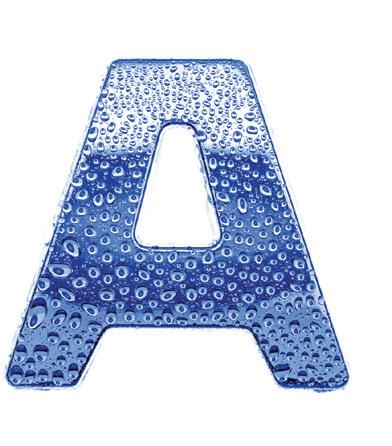

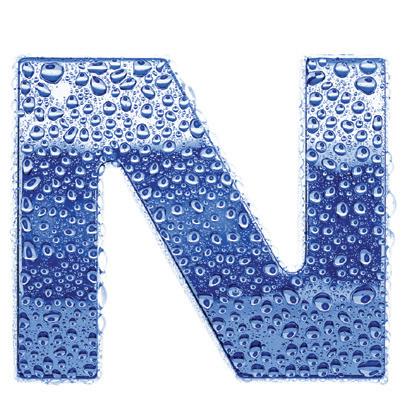


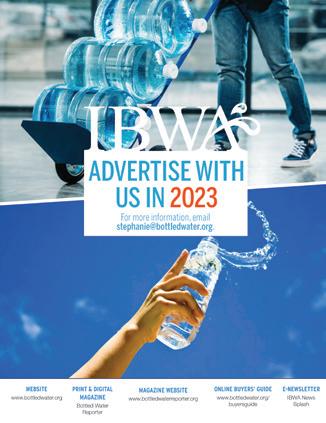

Sigmahomeproducts has been serving for bottled water industry since 1992. We are offering variety designs of water dispensers, cup dispensers, manual and electric water pumps for different design bottles, drinking cups, bottle handles, bottle racks, porcelain dispensers and wooden stands, non-spill caps, aqua valves, and metal cradles etc.

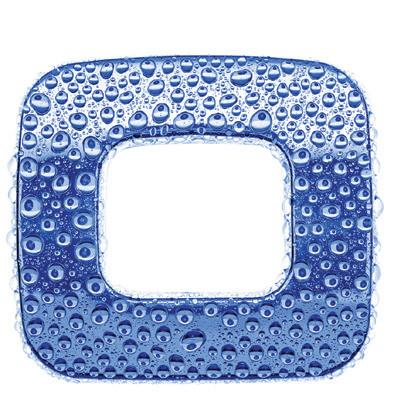


We can also provide with customized services. If you plan to develop new items for your business upgrading by using unlimited China manufacturing resources, please contact us by info@sigmahomeproducts.com.
We will charge no design fee for all R&D projects.































